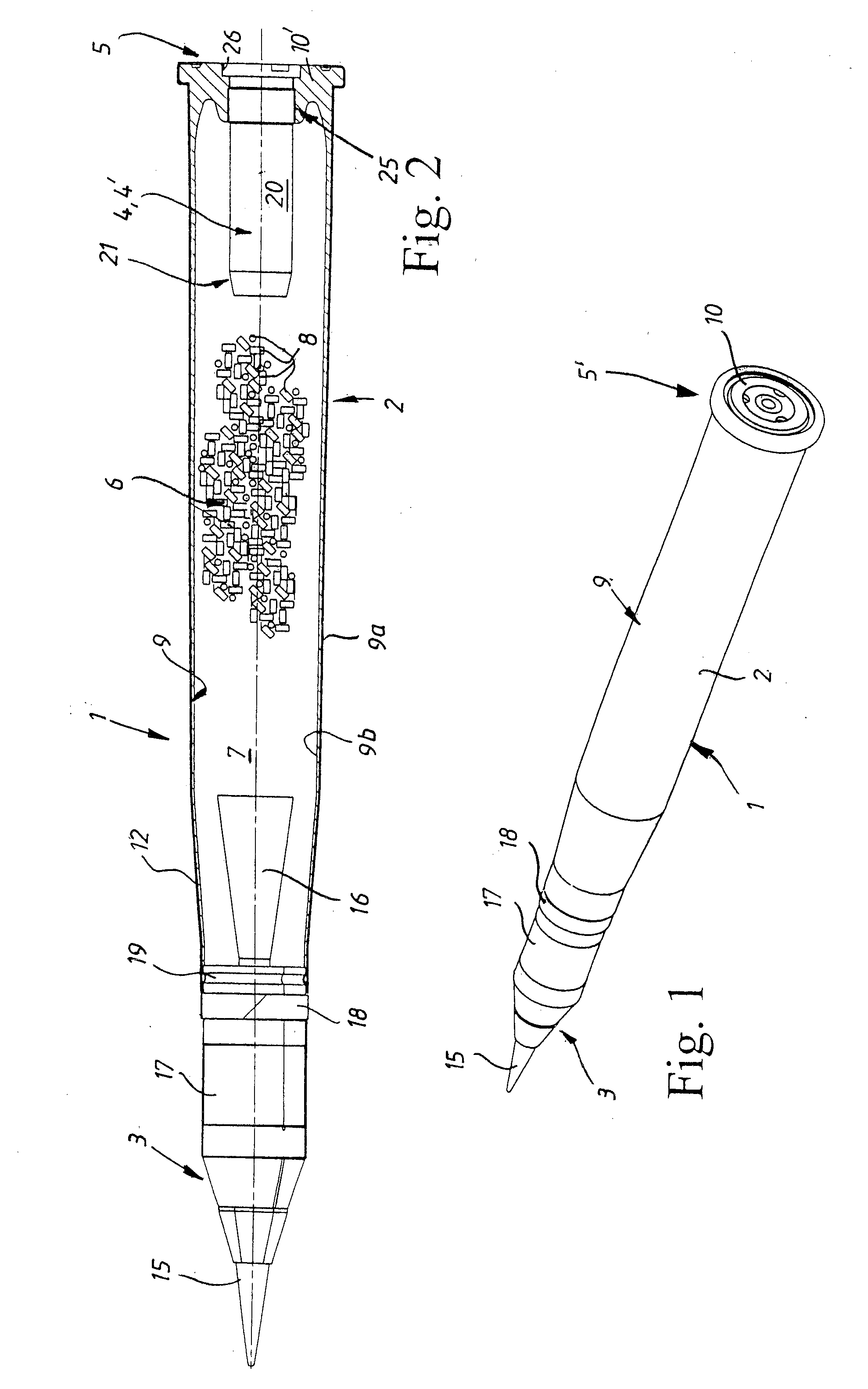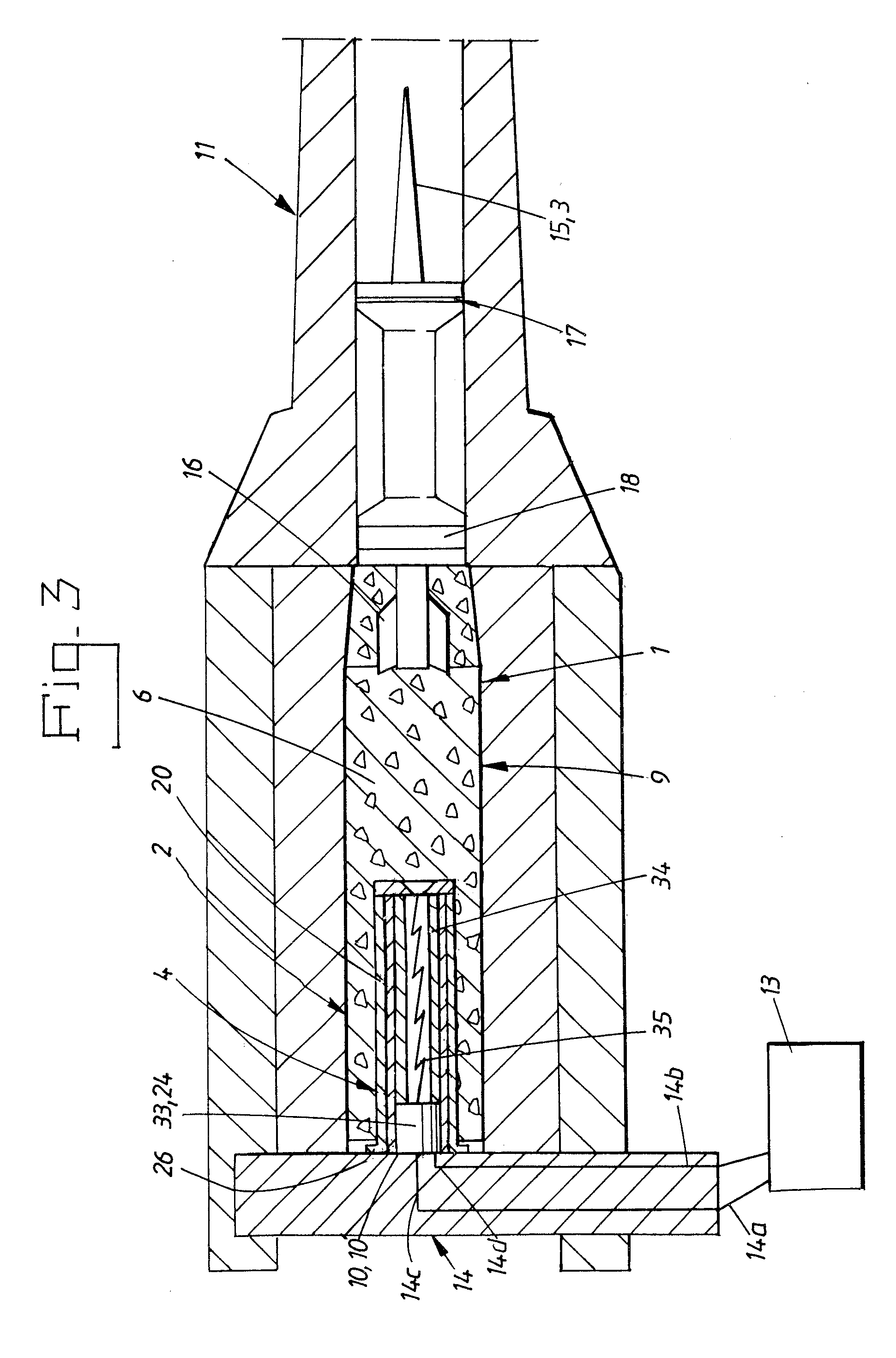Plasma generator comprising sacrificial material and method for forming plasma, as well as ammunition shot comprising a plasma genrator of this type
a plasma generator and sacrificial material technology, applied in the direction of blasting cartridges, weapons, ammunition, etc., can solve the problems of increasing increasing the total weight, and reducing the maximum size so as to facilitate the plasma process and the ignition of the propellent charge. , the effect of reducing the weigh
- Summary
- Abstract
- Description
- Claims
- Application Information
AI Technical Summary
Benefits of technology
Problems solved by technology
Method used
Image
Examples
second embodiment
[0141]The plasma generator 4′ according to this second embodiment, FIG. 9, further comprises a somewhat differently configured centre electrode 24′. The rear metallic centre connector 33′ is in FIG. 9 shown somewhat axially displaced inside the ceramic tube 23 in the direction of the front cylindrical body 28, with the formation of an empty space 43 towards the rear end 22 of the combustion chamber 20, which empty space 43 is intended for the male connector 49 of the back piece 14, i.e. the input conductor 14c (schematically shown in FIG. 9 and FIG. 10). In addition, the said centre connector 33′ comprises a rear centric cavity 44 extending axially inwards, the inner surface 44′ of which cavity 44 is lined with the same type of lamellar contact strip 45, and with corresponding function, as the lamellar contact strip 42 of the flange 26′, yet with the difference that the male connector 49 disposed on the back piece 14, which is schematically shown in FIG. 9 and FIG. 10 and acts as th...
first embodiment
[0146]One difference with the configuration of the lamellar contacts 42′, 45′ which is shown in FIG. 9 compared with the first embodiment shown in FIG. 4 is that the lamellar contact strips 42, 45 in FIG. 9 provide the facility for the connectors 48, 49 and the lamellar contact strips 42, 45 to be able to slide relative to each other over a certain axial distance and yet to be in fixed contact by virtue of the sliding surface, interacting between them, of the respective part. This configuration of the contact surface naturally provides a considerably larger contact surface than is the case with the customary contact surfaces of the point-contact or surface-contact type, so that the current transfer is spread over this larger contact surface, so that the current transfer is facilitated and the risk of a light arc is eliminated, thereby preventing welding / burning fast even in the event of a number of pulses.
[0147]Functional Description
[0148]The production, working and use of the plasm...
PUM
| Property | Measurement | Unit |
|---|---|---|
| melt temperature | aaaaa | aaaaa |
| temperature | aaaaa | aaaaa |
| temperature | aaaaa | aaaaa |
Abstract
Description
Claims
Application Information
 Login to View More
Login to View More - R&D
- Intellectual Property
- Life Sciences
- Materials
- Tech Scout
- Unparalleled Data Quality
- Higher Quality Content
- 60% Fewer Hallucinations
Browse by: Latest US Patents, China's latest patents, Technical Efficacy Thesaurus, Application Domain, Technology Topic, Popular Technical Reports.
© 2025 PatSnap. All rights reserved.Legal|Privacy policy|Modern Slavery Act Transparency Statement|Sitemap|About US| Contact US: help@patsnap.com



